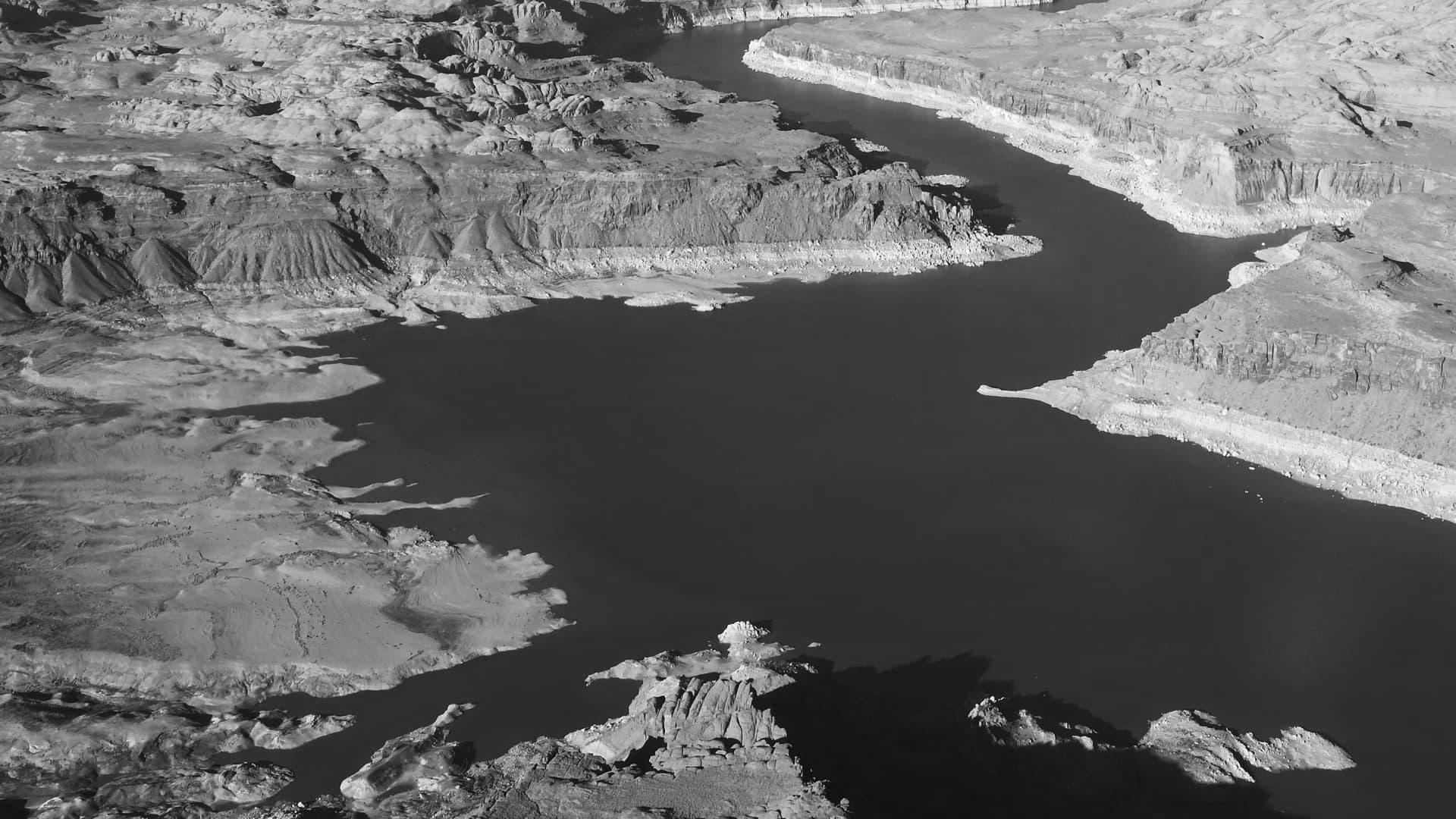Lake Powell Glen Canyon Dam water release delayed because of drought
Warning: Undefined variable $post_id in /home/webpages/lima-city/booktips/wordpress_de-2022-03-17-33f52d/wp-content/themes/fast-press/single.php on line 26

2022-05-05 01:59:17
#Lake #Powell #Glen #Canyon #Dam #water #release #delayed #due #drought
Water levels are at a historic low at Lake Powell on April 5, 2022 in Web page, Arizona.
Rj Sangosti| Medianews Group | The Denver Put up via Getty Pictures
The federal government on Tuesday introduced it would delay the discharge of water from one of the Colorado River's major reservoirs, an unprecedented motion that will temporarily deal with declining reservoir ranges fueled by the historic Western drought.
The choice will hold more water in Lake Powell, the reservoir situated on the Glen Canyon Dam in northern Arizona, instead of releasing it downstream to Lake Mead, the river's other major reservoir.
The actions come as water levels at both reservoirs reached their lowest ranges on file. Lake Powell's water level is at the moment at an elevation of 3,523 feet. If the extent drops under 3,490 feet, the so-called minimum energy pool, the Glen Canyon Dam, which provides electricity for about 5.8 million clients within the inland West, will not have the ability to generate electricity.
The delay is anticipated to guard operations on the dam for next 12 months, officials said during a press briefing on Tuesday, and can maintain nearly 500,000 acre-feet of water in Lake Powell. Underneath a separate plan, officials can even release about 500,000 acre-feet of water into Lake Powell from Flaming Gorge, a reservoir located upstream at the Utah-Wyoming border.
Officers stated the actions will assist save water, defend the dam's means to provide hydropower and provide officers with extra time to figure out learn how to function the dam at decrease water ranges.
"We now have by no means taken this step earlier than within the Colorado Basin," assistant Interior Department secretary Tanya Trujillo instructed reporters on Tuesday. "But the circumstances we see right this moment, and what we see on the horizon, demand that we take immediate action."
Federal officials last 12 months ordered the first-ever water cuts for the Colorado River Basin, which supplies water to more than 40 million individuals and a few 2.5 million acres of croplands in the West. The cuts have mostly affected farmers in Arizona, who use practically three-quarters of the available water provide to irrigate their crops.
In April, federal water managers warned the seven states that draw from the Colorado River that the government was contemplating taking emergency action to handle declining water levels at Lake Powell.
Later that month, representatives from the states despatched a letter to the Inside agreeing with the proposal and requesting that non permanent reductions in releases from Lake Powell be applied with out triggering further water cuts in any of the states.
The megadrought in the western U.S. has fueled the driest two decades within the area in no less than 1,200 years, with conditions likely to proceed by way of 2022 and persist for years. Researchers have estimated that 42% of the drought's severity is attributable to human-caused local weather change.
"Our local weather is altering, our actions are accountable for that, and we have to take responsible motion to reply," Trujillo stated. "We all must work collectively to protect the resources now we have and the declining water provides within the Colorado River that our communities rely on."
Quelle: www.cnbc.com